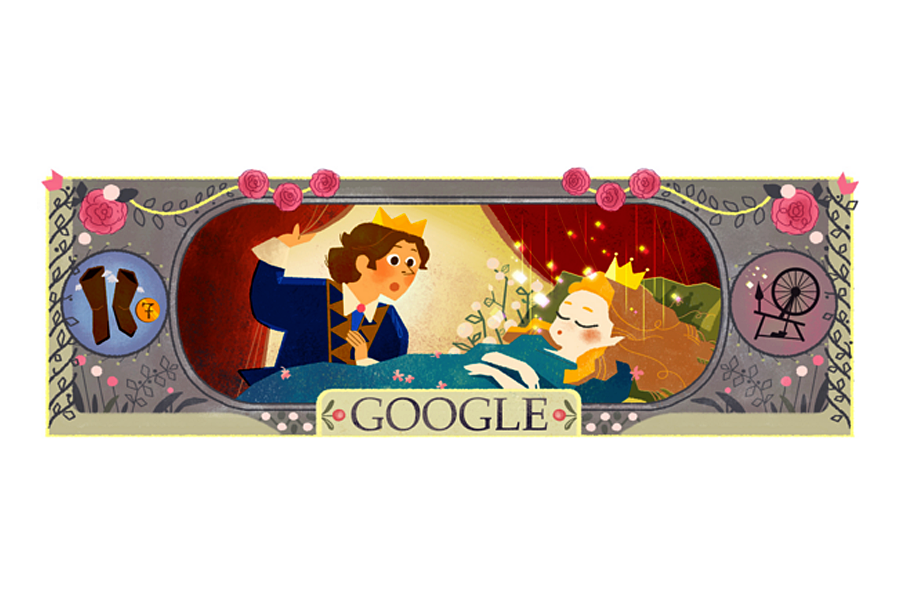Google Doodle fairytales: Tell me, who was Charles Perrault?
Loading...
"Tales and Stories of the Past with Morals" hardly sounds like a bestseller.
Fortunately, Charles Perrault gave his 1695 collection of tales a less stuffy subtitle: "Tales of Mother Goose."
As British author Angela Carter has pointed out, fairy tales don't really have authors. "Who first invented meatballs? In what country? Is there a definitive recipe for potato soup?" she wrote in her own collection of popular stories that are told, and re-told, adding a plot twist there or substituting an evil stepmother there.
But Monsieur Perrault, a 17th-century court official-turned-poet whose 388th birthday is celebrated in today's Google Doodle, is the closest thing we have. His rather highfalutin' versions of stories from "Cinderella" and "Puss in Boots" to "Sleeping Beauty" are likely responsible for their continued enjoyment today, although the 19th-century Grimm Brothers dream team tends to get more credit in pop culture. (They beat Perrault to Google Doodle fame by three years, despite composing their folktales 200 years later, and even had heartthrobs Matt Damon and Heath Ledger portray them on the big screen in a 2005 film.)
But Google's innocent image of Sleeping Beauty and her wide-eyed prince, with a side nod to Puss's seven-league boots, honors Perrault, who dedicated his late-in-life work to moralizing, but elegant, versions of folktales fit for teachable young French ladies at court.
Born in 1628 to a wealthy French family, Perrault's flair for writing earned him a spot at the Académie française, whose 40 elected "immortals" are charged with preserving the French language; today, its members spend their time nixing Anglicisms from French speech and editing the latest version of the Académie's official dictionary.
He fought for team Modern in the 1600s "Quarrel of the Ancients and the Moderns," a debate over whether the day's French authors could ever equal the classicists of old. He branched into Christian poetry, and finally, at age 67, dedicated himself to putting popular stories to paper. He wound up creating "literary fairy tales" as a genre, versus oral stories and their closer cousin, the folk tale.
Lest young listeners miss the point of the story, Perrault helpfully inserted rhyming morals, and revamped some details to make them better suited to ladies at court. But their verbal prettiness doesn't mean that the stories always end on a dainty note; Perrault's Little Red Riding Hood, for instance, is gobbled up and stays that way.
Wolves "Like to follow their tender young prey, And will track them right into their homes – lack-a-day!" the story bemoans. "Who among us has not learnt by this time to know, The most dangerous of wolves is the soft, smooth-tongued foe!"
The warning to "maidens so gentle and fair" to avoid falling into Wolves' beds is racier than most 20th-century children's favorite versions, Disney-fied for G-rated audiences. In part, that's thanks to the Grimm Brothers. Violent as their stories are, they're actually tamed down from original folktales: The Grimms edited their second edition for kids' ears, after the first edition in 1812, meant for grownups, didn't sell so well.
The Grimms' versions aren't quite as literary, anyway, given their motive: to boost German nationalism behind the idea of the "Volk," the "people," and save old wives' tales before they disappeared in the Industrial Revolution.
That's not to say Perrault didn't have political pressures, too. "Sleeping Beauty," for instance, a particularly gruesome tale in the oldest versions, was sanitized for "Mother Goose," and substituted a noble, loving prince for a lascivious king, keeping the writer's audience in mind.
The reinventions continue today, not just from Disney classics such as "Sleeping Beauty," but on to second-generation films: 2010's "Tangled," for instance. And Disney can be very thankful indeed to writers such as Perrault for these fairy tales. In 2012, the various iterations of the princesses earned Disney $3 billion.






